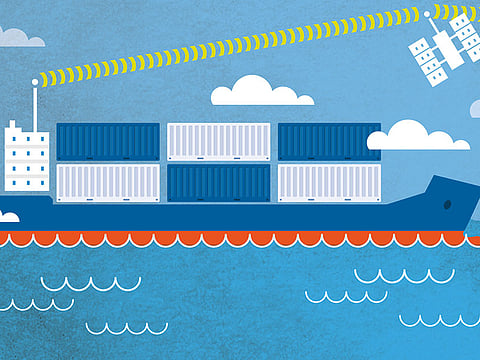Ships without sailors: A vision in the making
Major shippers with the big-data operations and deep pockets are necessary to integrate autonomous ships into their logistics operations

It sounds like a ghost story: A huge cargo vessel sails up and down the Norwegian coast, silently going about its business, without a captain or crew in sight. But if all goes as planned, it’s actually the future of shipping.
Week before last, Kongsberg Gruppen, a Norwegian maritime-technology firm, and fertiliser manufacturer Yara announced a partnership to build the world’s first fully autonomous cargo containership. Manned voyages will start in 2018, and in 2020 the Yara Birkeland will set sail all on its own. It’s the beginning of a revolution that should transform one of the world’s oldest and most conservative industries — and make global shipping safer, faster and cleaner than it’s ever been.
The commercial rationale for autonomous ships has long been clear. The United States Coast Guard has estimated that human error accounts for up to 96 per cent of all marine casualties. A recent surge in piracy is a grim reminder that crews remain vulnerable (and valuable) targets for international criminals. Perhaps unsurprisingly, the industry is facing a chronic shortage of skilled workers who want a career at sea.
By one consultant’s estimate, carrying sailors accounts for 44 per cent of a ship’s costs. That’s not just salaries: Crew quarters, air-conditioning units, a bridge (which typically requires heavy ballast to ensure a ship’s balance) and other amenities take up valuable weight and space that might otherwise be used for cargo. And that dead weight contributes to a bigger problem: Maritime shipping accounts for about 2.5 per cent of global greenhouse-gas emissions. Barring a radical change, those emissions are set to surge in the decades ahead.
All this explains why eliminating a crew and its costs has been a longtime goal for companies and governments around the world. The most advanced effort so far has come from Rolls-Royce Holdings, which rolled out a virtual-reality prototype of an autonomous ship in 2014. According to the company, the ship will be 5 per cent lighter, and burn up to 15 per cent less fuel, than a comparable vessel with humans aboard.
That effort has been the subject of considerable scepticism. Seafarer unions doubt that technology can replace experienced sailors, and note that the International Maritime Organisation, the United Nations agency that oversees shipping, prohibits crewless operations. But what seemed impossible three years ago is quickly becoming reality. Most of the sensor technology for autonomous ships is now commercially available, and crucial collision-avoidance tools have been around in various forms since the early 1990s.
The Yara Birkeland is a modest but important step forward. Although it can be operated remotely by a pilot, it will also be able to cruise on its own using an array of sensors, cameras and navigation tools, all guided by sophisticated algorithms. Back on shore, an operations centre will monitor its progress.
A first chance
When it launches next year, with a fully electric power plant, the ship will transport fertiliser from Yara’s factory to ports about 16 miles (away, thereby replacing 40,000 shipments a year that had once been carried by polluting diesel trucks. That short route will give the ship’s owners — along with regulators and other autonomous shipping aspirants — a first chance to see such a vessel in operation.
Such trips may soon become routine. Norway has designated the waters off Trondheim as a test site for autonomous ships from container vessels to tugs. Rolls-Royce announced this year that it expects autonomous container ships in international waters within 10 to 15 years. Other groups are working to do it sooner: One British organization plans to have a solar-powered autonomous research vessel cross the Atlantic in 2019. Lloyd’s Register, the 250-year-old ship-classification group, has already issued guidance for crewless operations.
All this could potentially have enormous benefits for the shipping industry - and the world. Vast amounts of real-time data from the ships will allow fleet owners to optimise their routes (and profits) based on factors such as maintenance schedules, weather patterns, fuel prices and cargoes. Eventually, fleet owners might find themselves competing with the likes of Amazon.com and Alibaba Group Holding — major shippers with the big-data operations and deep pockets necessary to integrate autonomous ships into their logistics operations.
For those companies, “all hands on deck” already means fingers on a keyboard or a joystick. Within a decade or two, the maritime shipping industry may well be thinking the same way.
— Bloomberg
Adam Minter is a Bloomberg View columnist. He is the author of Junkyard Planet: Travels in the Billion-Dollar Trash Trade.
Sign up for the Daily Briefing
Get the latest news and updates straight to your inbox



